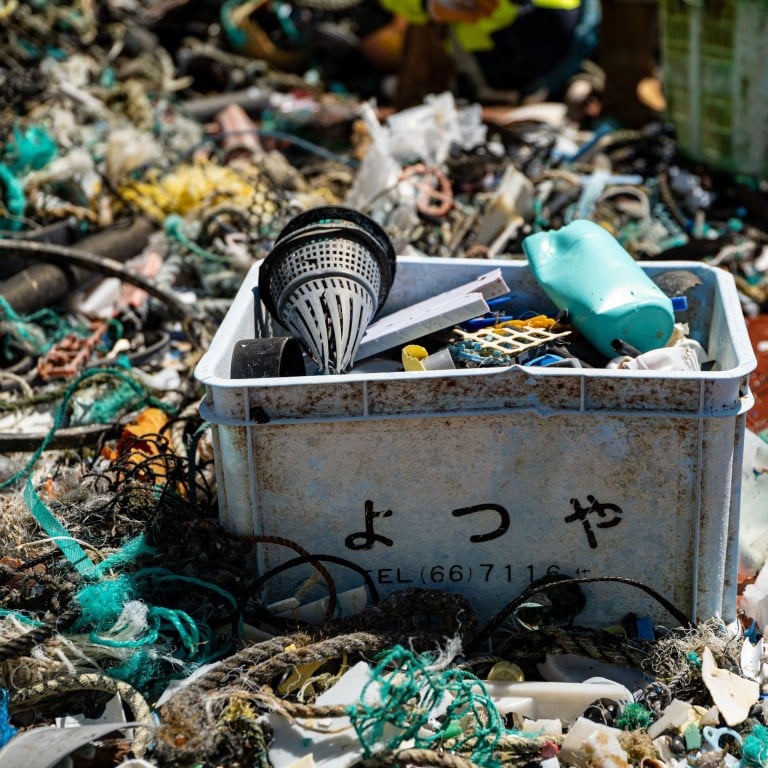
Japan and China big sources of plastic in North Pacific Garbage Patch: study
- More than three-quarters of the giant plastic mass found between Hawaii and California comes from the fishing industry, say researchers
- The Ocean Cleanup says it aims to clean up 90 per cent of floating ocean plastic by 2040, an operation that would cost around €1 billion
They found that Japan contributed 34 per cent and mainland China 32 per cent to the formation of the world’s largest build-up of ocean plastic, which could be found between Hawaii and California. They are followed by South Korea, the United States and Taiwan.
“We attribute this observation to inputs from fisheries, with Japan being a major fishing nation, but also to the anthropogenic debris released by the 2011 Tohoku tsunami,” the researchers wrote in an article published in the peer-reviewed journal Scientific Reports early this month.

As for China, the size and high activity of the country’s fishing fleets in the region could account for a greater chance of lost gear accumulating, said Laurent Lebreton, lead author and head of research at The Ocean Cleanup.
The analysis of 570kg (1,256lbs) of debris from the North Pacific Ocean showed that almost half the plastic objects carried production dates before 2000.
China’s war on plastics lacks momentum without ‘necessary’ circular economy
Among 6,100 debris items collected in 2019, the oldest identified item was a buoy from 1966, according to the study.
“That informs us on the persistence of plastic. It has been accumulating for decades now and it’s not going anywhere by itself,” Lebreton said.
He said fishing gear floating in the ocean was not only a problem for the environment and marine life, but also for fishing activities and the economy.
“Last time when our researchers were at the sea, [the vessel] got tangled into fishing nets. Sailors had to dive under the boat and manually cut the fishing nets while all operations stopped. Sailors and the captain told us it’s quite frequent and becoming more and more of a problem,” he said.
In addition to fishing and aquaculture equipment like oyster nets, eel traps and fish boxes, the researchers also found items such as party poppers, pens and toothbrushes in the ocean.
Lebreton said the non-profit aimed to clean up 90 per cent of floating ocean plastic by 2040, an operation that would cost around €1 billion (US$1 billion).
‘No faeces came out’: Rescued Australia turtle pooped pure plastic for days
“The recovery of plastic debris in subtropical gyres is a challenging endeavour,” the researchers wrote, adding that tracking plastic litter to its source was crucial if the problem was to be solved and further accumulation halted.
“While these efforts help in reducing the mass of plastic accumulated at the surface of the ocean, they also enable the analysis of debris composition and origin, allowing to identify the sources of pollution which is essential to design mitigation measures aiming at reducing future inputs.”



